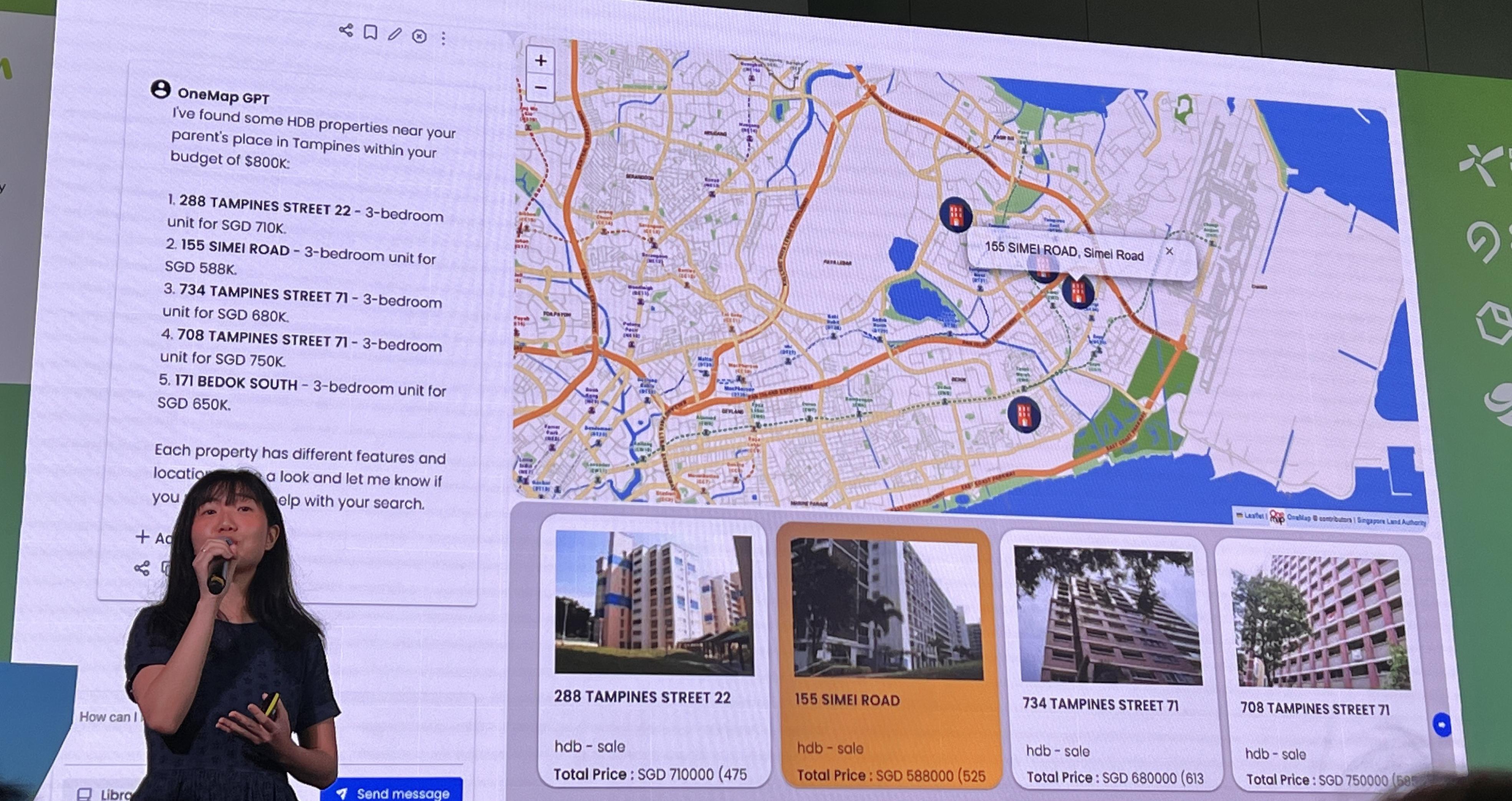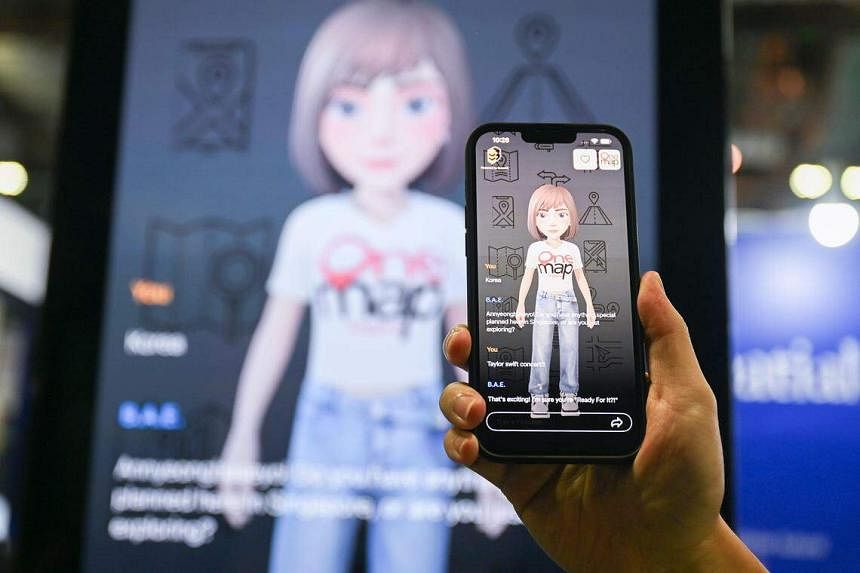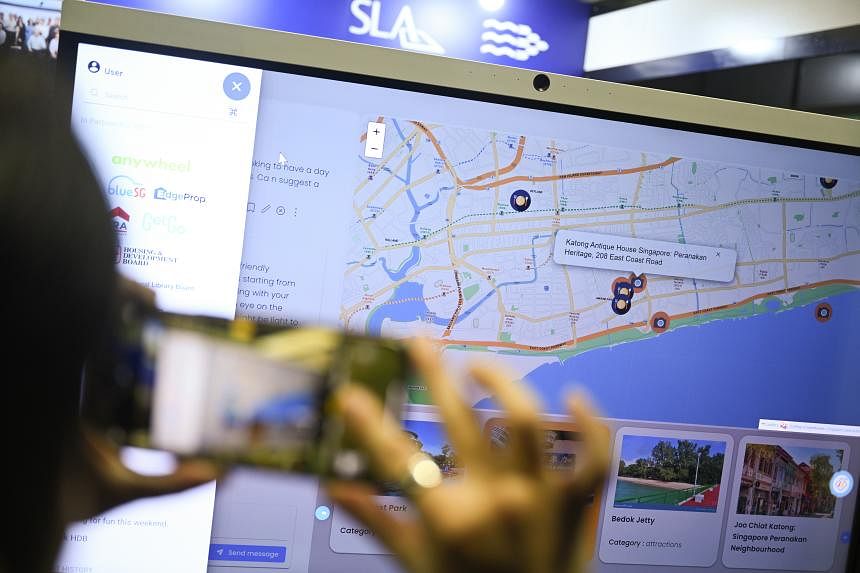SINGAPORE – Looking for properties priced under $800,000 in Tampines? Aspiring home owners may soon be able to type these keywords in natural language on a portal and find a list of units for sale and their locations overlaid on a map.
Tech giant Huawei has developed a prototype portal that uses multiple large language models of artificial intelligence (AI) technology, such as Meta’s Llama 2, to search the databases of property firms and government agencies to extract useful data and generate maps.
It is one of two projects that won the OneMap GPT Challenge, which aimed to make the national OneMap more relevant to the public, government agencies, statutory boards, real estate companies and other businesses.
OneMap is a national map developed by the Singapore Land Authority (SLA). The OneMap website and app currently show property prices, land ownership, the nearest amenities and demographic data, plotted against a 2D map.
The challenge required participants to enhance the functions or introduce new ones by using generative AI technologies and incorporating useful map-based information extracted from government data to offer users greater convenience.
This will simplify the process of sourcing information from property websites, maps and the Housing Board portal.
Huawei’s prototype allows users to shortlist suitable properties near their parents’ home. They can type “looking for properties in Tampines near my parents’ place. Anything with HDB under $800k?”, and a list of available properties is generated in text and displayed on a map.
Other relevant information such as nearby schools and MRT stations is also listed.
If the users type “Do I qualify for HDB’s proximity housing grant?”, the prototype will ask for their parents’ address before generating relevant results.

It can also be used to plan a fun-filled itinerary by typing questions such as “Where can I take my two kids, aged 8 and 10, and my parents to have a fun time during the school holidays?”
This generates a list of activities that are suitable for adults and children with the specified ages. The activities are also displayed on a map on the same webpage.
The results can be refined by typing a specific location, time or weather conditions.
To generate search results, Huawei taps data from OneMap, government agencies such as HDB, National Environmental Agency, SBS Transit and companies such as PropNex, ERA and Sheng Shiong.
The contest was organised by SLA in October 2023, in collaboration with the Government Technology Agency (GovTech) and the Infocomm Media Development Authority.
The other winning entry is from local start-up BuzzAR, which created a prototype app with a chatbot that it described as an AI-powered digital human built using its “proprietary avatar engine”.
Dubbed BAE, short for Buzz’s Amazing Entity, the prototype caters to tourists by providing relevant information and recommendations.
Users can type “Where is the best char kway teow in eastern Singapore?” as if they are talking to a real person, and relevant results will be displayed in the app.
BuzzAR, which develops augmented reality and AI solutions for the tourism and retail sectors, makes use of OpenAI’s GPT-4 technology to translate natural language queries to gather data from OneMap and the Singapore Tourism Board.

The two winning prototypes were unveiled at Geo Connect Asia 2024 on March 6. The geospatial conference was held at Sands Expo and Convention Centre on March 6 and 7.
BuzzAR and Huawei each won $50,000 for their entries. SLA aims to hold a public trial for both prototypes by end-2024.
BuzzAR and Huawei demonstrated innovative approaches to enrich the OneMap user experience, supported by their readiness for implementation of the prototypes, as well as their proven products, services and technical expertise, said SLA, one of the organisations on the judging panel, which also included AI Singapore and GovTech.
At the same event, a function that allows wheelchair users to find barrier-free routes on the OneMap app was officially launched.
The Straits Times reported in January that this function is available for selected areas such as Bukit Merah, Ang Mo Kio, Orchard Road, River Valley, Marina South, Punggol, Tanglin and the Singapore River precinct. It will be expanded to cover more areas.
SLA and the Ministry of Health’s Office for Healthcare Transformation also signed a memorandum of understanding (MOU) at Geo Connect Asia 2024 to develop a web-based map service.
This is an enhancement to the Digital Local Connect initiative that consolidates information from health and social services for community partners such as NTUC Health and Methodist Welfare Services, grassroots volunteers and general practitioners. Yio Chu Kang is the first of six precincts to introduce the service since December 2023.
The data is consolidated from health services such as general practitioner clinics, dental care, inpatient rehabilitation, dialysis and specialist centres, as well as social services that provide financial, family, disability, dementia and caregiving support.
The data includes details of services and programmes, opening hours, contact details and a map to display nearby services within a specified location.
Users currently have to source for such information from various platforms.
Another MOU was signed between SLA and SingHealth Community Hospitals to develop a “living asset map”, another web-based service that aims to connect Singaporeans to support groups, interest groups, volunteer organisations and community centres, which support holistic health and well-being.
Coordinators in the health and social care sectors will be able to use the map to link patients and clients to organisations such active ageing centres and group activities such as tai chi and zumba.
Minister for Culture, Community and Youth Edwin Tong, who was one of the speakers at the event, said: “Sustaining good health is a lot more than what happens in the hospitals or clinics. It is about the everyday choices that we make – our behaviour patterns, whether we are socially active... making sure that our social and mental well-being is preserved.
“So I hope that using geospatial tools to support social prescribing will enable more Singaporeans to lead healthier and more active lives.”

